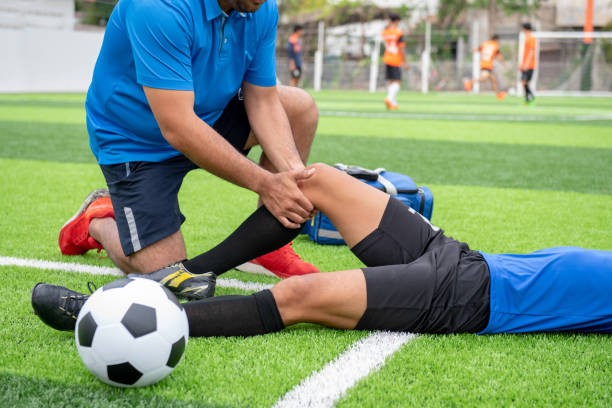Sports Injuries Types - Maximed Turkey

Sports Injuries
Are your teammates or opponents always getting injured?
If so, it's time to do some research on the best practices for preventing
injuries. After reading this post, you'll know more about how to care for your
body and prevent injury before it happens.
It seems like every time you turn around someone on
your team or another team is injured. You might wonder if everyone is trying to
get sidelined with an injury because they don't want to play anymore. But if
this situation sounds like something you've encountered too many times, some
lessons can be learned from these events - namely that prevention is the key.
What is a Contusion?
Contusion is a bruise. At the site of impact, the blood
vessels are ruptured and blood leaks into tissue. As time passes, the blood
settles and becomes a dark color. The area may swell up if there has been
bleeding under the skin. This is all caused by trauma to soft tissue. But why
do some people have greater success at preventing these injuries? What can you
do to prevent them? Let's take a look at some solutions that are tried and
true, as well as some newer options that are gaining popularity.
What is a Sprain?
A sprain is like a bruise, but it also involves damage
to the ligaments which connect bone to bone. The results are pain and swelling,
depending on the severity of the sprain. The difference between a sprain and a
contusion is that a sprain is a tear of the muscle bundle. The muscle bundles
are all wrapped up within the ligaments. If the ligaments are torn, this can
cause strains to occur. These injuries can be serious, so it's important to
know how to care for them properly.
What is an ACL?
An ACL is an acronym for the anterior cruciate
ligament. It's important because it helps to support the knee joint by
protecting the inside of your knee cap, which is called your patella (knee
cap). Without the ACL, your knee joint would be unstable.
The anterior cruciate ligament is found in the front of
your leg. It helps keep your knees together or prevents them from moving too
much when you want to move forward. An ACL injury happens after an impact when
either your leg or knees are suddenly bent backwards when trying to stop
suddenly - which in turn causes tearing in the ACL ligaments.
What is a Strain?
Like a sprain, an injury to muscle tissue is often
called a strain. But like all injuries, strains can be minor or serious
depending on how much damage has been done to the tissue. With an injury to
muscles that's not serious, you may feel some pain and notice some swelling -
but responding well to ice and rest will keep this from becoming an issue.
What is a Fracture?
Fractures can occur when you're playing a sport and
your body is hit or falls in an awkward position. If the force of the impact is
great enough, it can cause the bone to break. It may be difficult to walk for a
while because it takes about six weeks for a fracture to heal. Fractures
require more time to heal than most injuries do because they involve broken
bones - and broken bones take longer to mend than overuse injuries do.
What is a Dislocation?
If your knee is dislocated, it means that the joint has come out of place. The knee is one of the most complex joints in your body so it's rarely dislocated on its own - meaning you'll need to be diagnosed by a doctor to confirm that you've dislocated your knee.
What is an Injury?
An injury can be caused by overuse, acute trauma,
microtrauma, or just plain bad luck! What do you think causes most injuries? In
my opinion, it's a combination of overuse and acute trauma that causes most
sports injuries. If you're playing a sport that involves lots of running,
agility, and balance, then your likelihood of being injured increases because
you're using muscles in ways they aren't accustomed to being used. And if you
get hit or fall while playing a sport, an injury could result from it.
When you suffer an injury, what should you do?
To begin with, you need to know how your body feels
when it's hurt. If you can't tell because you are in too much pain, it's time
to get yourself checked out. You'll want to watch for swelling or
discoloration. You'll also want to take stock of the type of pain you're
experiencing - is it sharp? Or dull? Or shooting? These are all things that can
help your doctor determine what kind of injury you may have sustained.
Regardless of the type of injury, your body will
respond well to two things: ice or chilling and rest. Both can be done at home
with an ice pack or cool pack which you should be able to find at the local drugstore.
